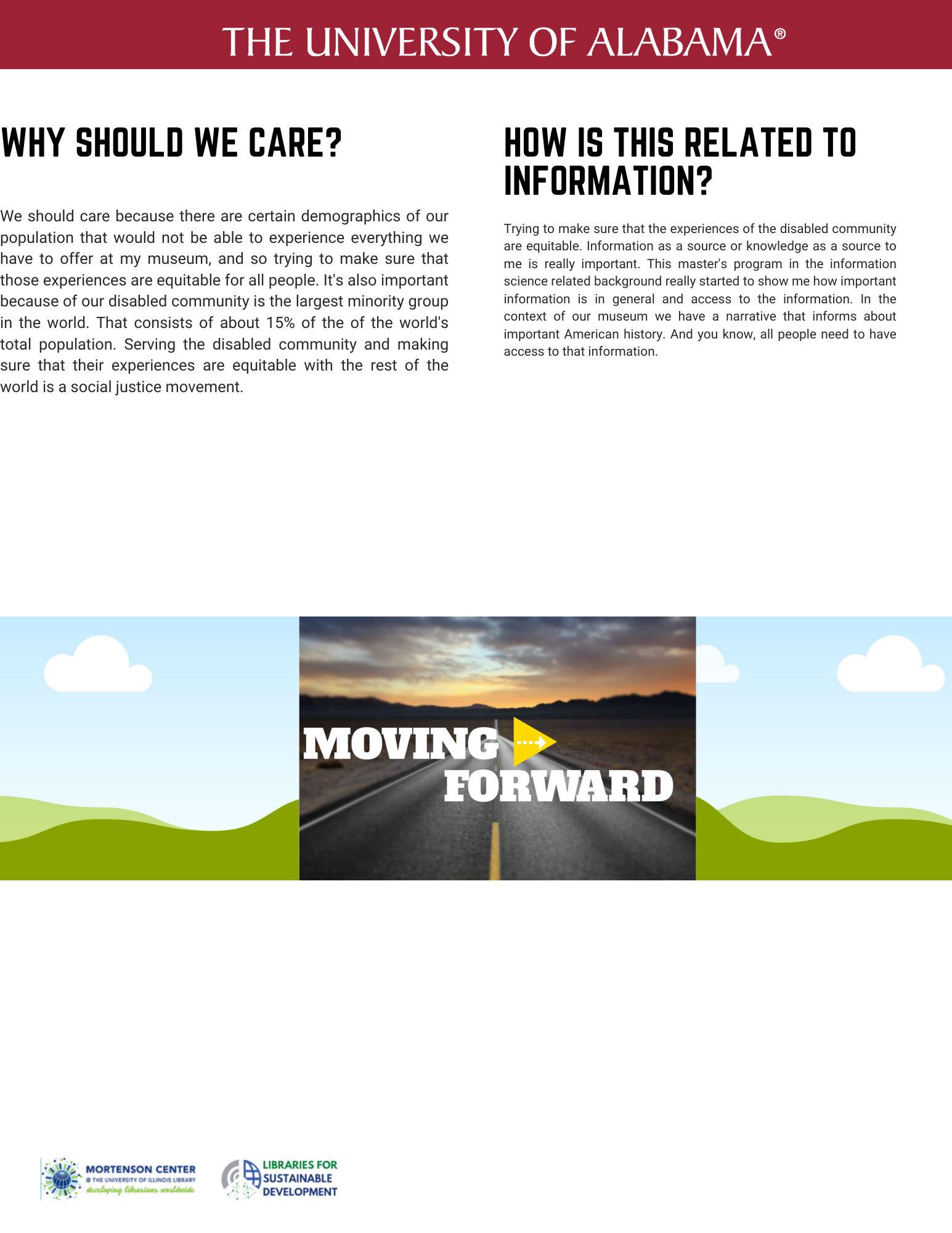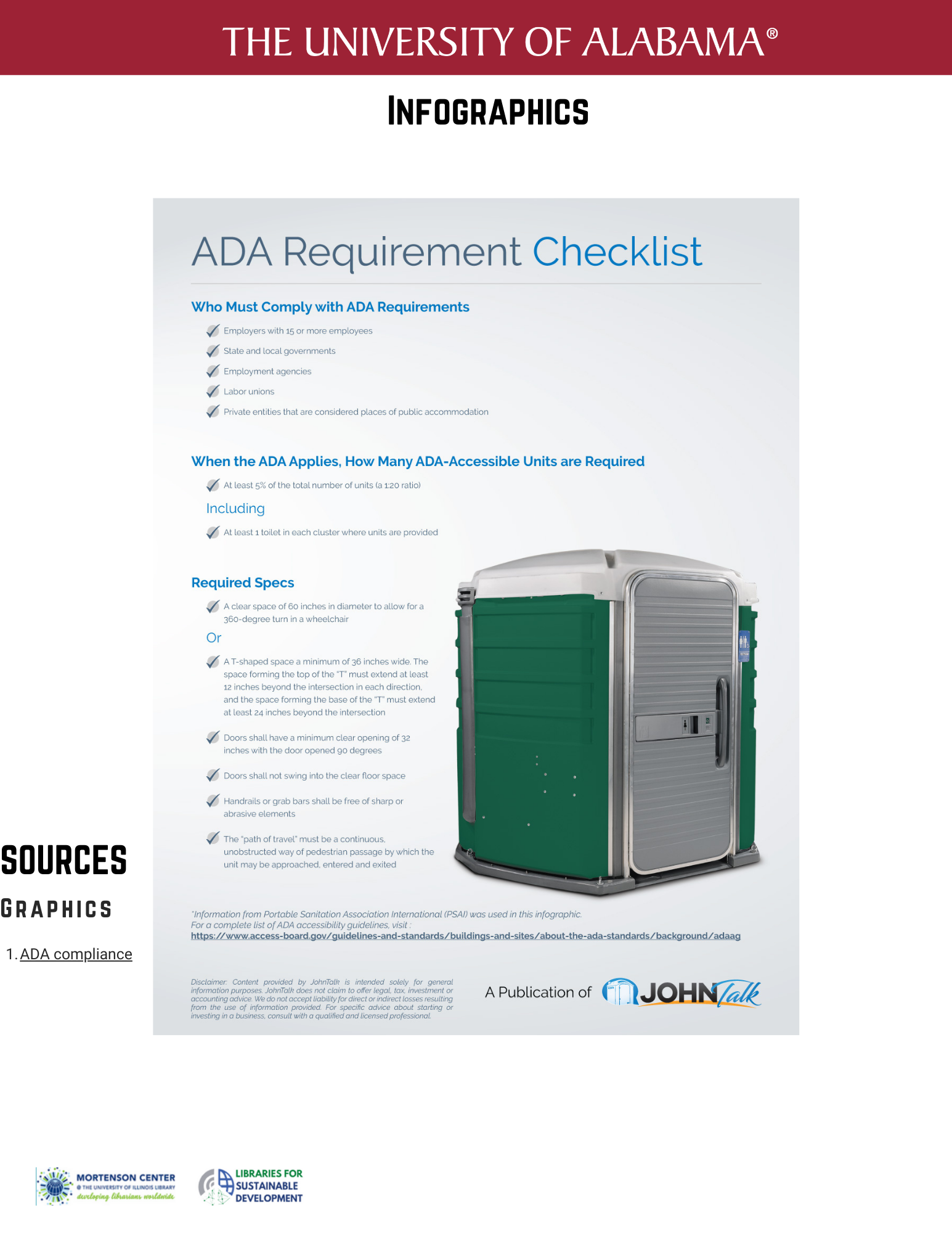



My social justice project is to provide an equitable visitor experience for the disabled community at the Birmingham Civil Rights Institute (an educational institution and a museum. This page is dedicated to introducing the critical lens of social justice analysis.
What is the goal?
Birmingham Civil Rights Institute is a social justice institution and not really a social justice organization. We do not go out and protest and fight, we do advocate for certain things. We advocate for education, civic engagement, and keeping the history preserved and telling those stories. We are an organization that recognizes our historical context and our understanding of the Civil Rights movement and how Birmingham was instrumental in the positive gains of the Civil Rights movement. Our ultimate goal and mission is to be good stewards of the knowledge and to continue to teach and spread the history.
My organization is one that teaches the present about the past in order to enhance the future. This is not just for Black people as we also highlight the human rights violations that occurred in other parts of the world in our Human Rights gallery. When the public is in our mist we have a duty to fulfill our mission in the best possible way by reaching all where they are and then carry them where we want them to go. And so, being that type of organization that is still not fully having an equitable experience for as many people as we can, I thought, was something that we needed to tackle.
Why should we care?
I care because my son, who passed away at at 19 years old in 2019, was a young man who was born with spina bifida which is a whole in the spine during fetal development. Because of that disease he was relegated to a wheelchair for majority his life. And so this is why this is dear personally to my heart.
We should care because there are certain demographics of our population that would not be able to experience everything we have to offer at my museum, and so trying to make sure that those experiences are equitable for all people. It's also important because of our disabled community is the largest minority group in the world. That consists of about 15% of the of the world's total population. Serving the disabled community and making sure that their experiences are equitable with the rest of the world is a social justice movement.
How is it related to information?
Trying to make sure that the experiences of the disabled community are equitable. Information as a source or knowledge as a source to me is really important. This master's program in the information science related background really started to show me how important information is in general and access to the information. In the context of our museum we have a narrative that informs about important American history. And you know, all people need to have access to that information.
What can I (and my information agency and the profession) do?
What I can do is continue to be an advocate for this type of programming that is more inclusive of the disabled community. I can continue to invite organizations and individuals to sit in on planning meetings so that their input is valued and utilized. I can also continue to solicit information and feedback from visitors to gain their information so that it can be included in the data that we use when developing exhibits etc. My organization can assist itself by implementing the findings that come from analyzing the data that is provided by the surveys from the disabled community and all visitors. My organization can also lean on its board of directors to take this on as an initiative that the organization must take on. We have existed 31 years and the board of directors need to further the mission and vision by pushing to make the most equitable experience possible, which would be to use universal design for all future programming and exhibit building. Then my organization can put some funding behind making these changes in our permanent galleries so that the disabled community can have that comparable experience. Lastly, the community could petition the city of Birmingham to make it mandatory that all the museums in the city have to accommodate different types of disabilities in their permanent galleries. The mayor could also institute that universal design be utilized in the planning of all future building projects in the city.
Summary
Ultimately I plan to achieve an update to the permanent galleries of the Birmingham Civil Rights Institute that is inclusive of several different disabilities including, hearing impaired, visions impaired, cognitive. Implementing accessible design measures when developing or updating the permanent galleries. Our organization will also exploit the relationships that we are making with organizations and members of the disabled community so that in the future they will become stakeholders and sit at the table when planning and visualizing is occurring.
List of References
Falk, J. H. (1999). Museums as Institutions for Personal Learning. Daedalus, 128(3), 259–275. http://www.jstor.org/stable/20027574
Falk, J. H. (2008). Viewing Art Museum Visitors Through the Lens of Identity. Visual Arts Research, 34(2), 25–34. http://www.jstor.org/stable/20715472
Korn, R. (1992). Redefining the Visitor Experience. The Journal of Museum Education, 17(3), 17–19. http://www.jstor.org/stable/43738169
Pulh, M., & Mencarelli, R. (2015). Web 2.0: Is the Museum–Visitor Relationship Being Redefined? International Journal of Arts Management, 18(1), 43–51. http://www.jstor.org/stable/24587086
Stein, M. A. (2004). Same Struggle, Different Difference: ADA Accommodations as Antidiscrimination. University of Pennsylvania Law Review, 153(2), 579–673. https://doi.org/10.2307/4150664